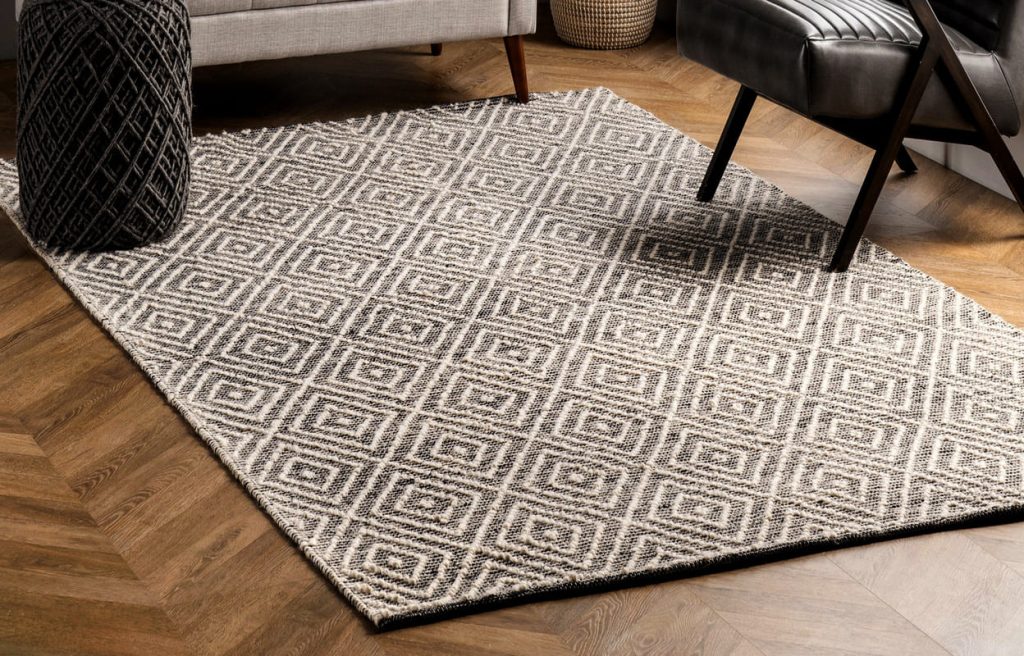Blogs
The Perfect Rug for Every Room: A Style Guide
When you’re designing a room, the right rug can tie everything together. Consider the room’s size, color scheme, and function when selecting a rug. Choose the right size for each space, and pick colors that complement the walls and furniture. Opt for durable materials in high-traffic areas, and softer fibers in bedrooms. Layer accent rugs on a neutral base for added depth. Follow these tips, and you’ll discover the perfect rug for every room.
Rug Sizing Rules for Each Room
When you’re selecting a rug for your space, it’s crucial to get the sizing right to create a cohesive and balanced look. For the living room, opt for an 8×10’ or 9×12’ area rug that extends at least 6” wider than the sofa on both sides. In the dining room, choose a rug that’s at least 12” away from the walls and extends 36” from the table’s edge to accommodate pulled-out chairs. Bedroom rugs should have 24” on all three sides of the bed, with sizes based on the bed size. Runners need 3” between the wall and rug on each side. Ensure the rug accommodates the entire room and all furniture legs to protect your hardwood floors.
Color Considerations for Different Spaces
Beyond getting the right size, you’ll want to consider color when selecting a rug for your space. In the blue room, opt for Stiffkey Blue by Farrow & Ball and pair it with warmer beige or rust-toned area rugs. Pigeon by Farrow & Ball is perfect for the green room; complement it with rugs in soothing red tones. London Clay by Farrow & Ball works wonders in the brown room, especially when paired with creamy gold, soft grey, or ivory wool rugs. White Flour by Sherwin Williams is a classic choice for the white room, and blue-toned rugs offer a sophisticated contrast. Finally, Preference Red by Farrow & Ball in the red room pairs beautifully with darker-toned patterned rugs for a cozy, enveloping feel.
Material Choices Based on Room Function
Your rug’s material plays a crucial role in its durability and overall suitability for each room in your home. For high-traffic areas like living spaces, opt for durable natural materials such as wool, jute, or sisal. When choosing a rug for your dining room, wool is your best bet due to its stain resistance and easy cleanup. In the bedroom, prioritize comfort with soft materials like wool, shag, or natural fibers. Performance or natural fiber rugs are ideal for entryways as they can withstand heavy foot traffic. For the kitchen, choose spill-resistant materials such as cotton or synthetic rugs to ensure easy maintenance. By selecting the right rug material for each room, you’ll create a functional and stylish space that lasts.
Layering Rugs for Added Depth and Interest
Layering rugs is a simple yet effective way to add depth, texture, and visual interest to your space. Start with a neutral base rug, then place a smaller rug on top that’s roughly 2/3 the size. This showcases the special top rug while letting the base peek through. When layering, position the top rug partially on the base for appreciation of both. Use this technique in living rooms, dining rooms, and bedrooms for a curated, intentional look. Combine two different styles, like a natural jute base with a patterned wool top layer from Loloi to create a unique, personalized aesthetic. Layering rugs makes the room look pulled together while providing an easy refresh without replacing the entire rug.
Styling Tips for a Cohesive Look
To create a cohesive look when styling with rugs, consider the size, pattern, color, and texture of your chosen rug in relation to the room’s existing decor. Ensure the rug size allows 6-8 inches of exposed floor around the perimeter for a balanced look. Incorporate these elements for a stylish, put-together space:
Complement the room’s color scheme with rug colors
Add visual interest with rug patterns and textures
Purposefully arrange furniture legs on or off the rug
Choose durable rug materials for high-traffic areas
Layer accent rugs on a neutral base for depth
Frequently Asked Questions
What Is the 18-Inch Rule for Rugs?
When placing rugs, leave at least 18 inches of exposed flooring around the edges. This rug size guideline ensures proper room proportions and creates a polished look. It’s a key consideration for rug placement in rooms.
What Is the Rule of Thumb for Area Rugs?
When choosing an area rug, consider size, material, pattern, texture, and color to complement your space. Place it strategically for visual impact and functionality. Maintain it properly and plan your budget for the perfect rug.
Should the Rug Be Darker or Lighter Than the Sofa?
For a stylish look, choose a rug that contrasts your sofa’s color. Consider size, placement, and material for the perfect fit. Coordinate patterns and textures to reflect your personality while staying within budget and maintaining harmony.
What Color Rug Goes With Everything?
Opt for rugs in neutral tones or a monochromatic palette to create a versatile foundation. Natural fibers, transitional styles, and minimalist designs work well. Accent with complementary hues and coordinating patterns for a stylish, contemporary aesthetic.

